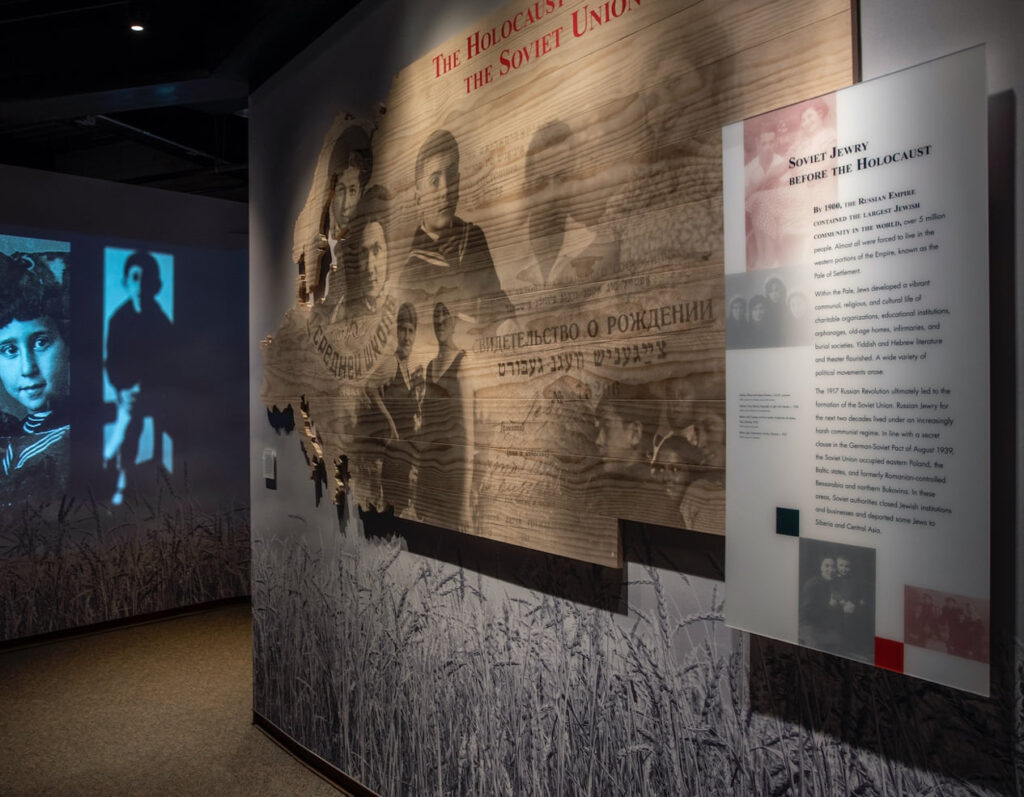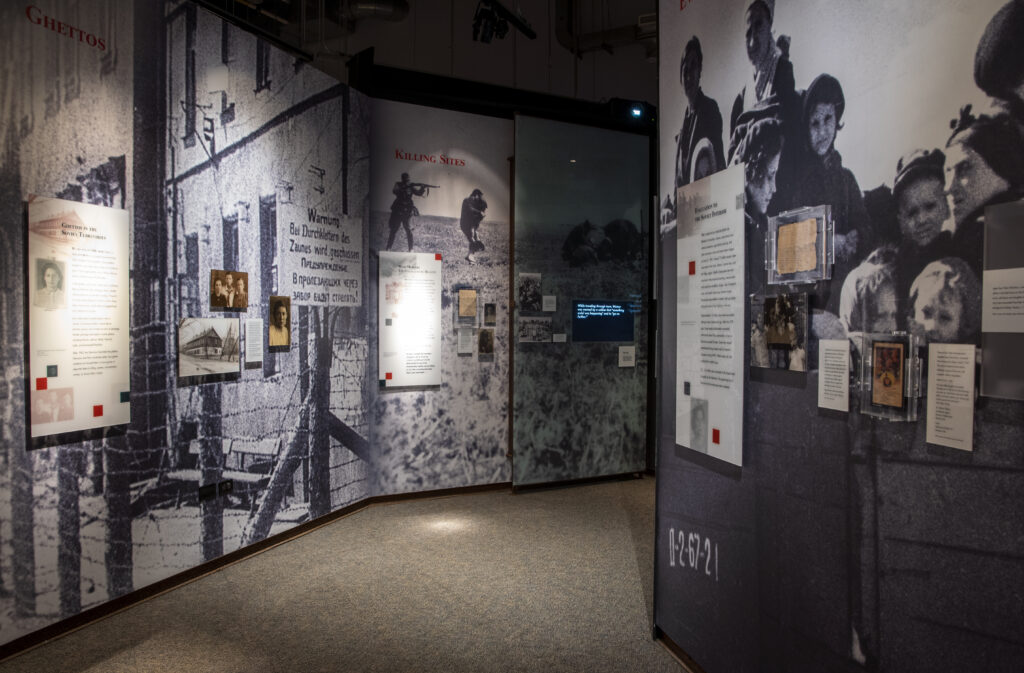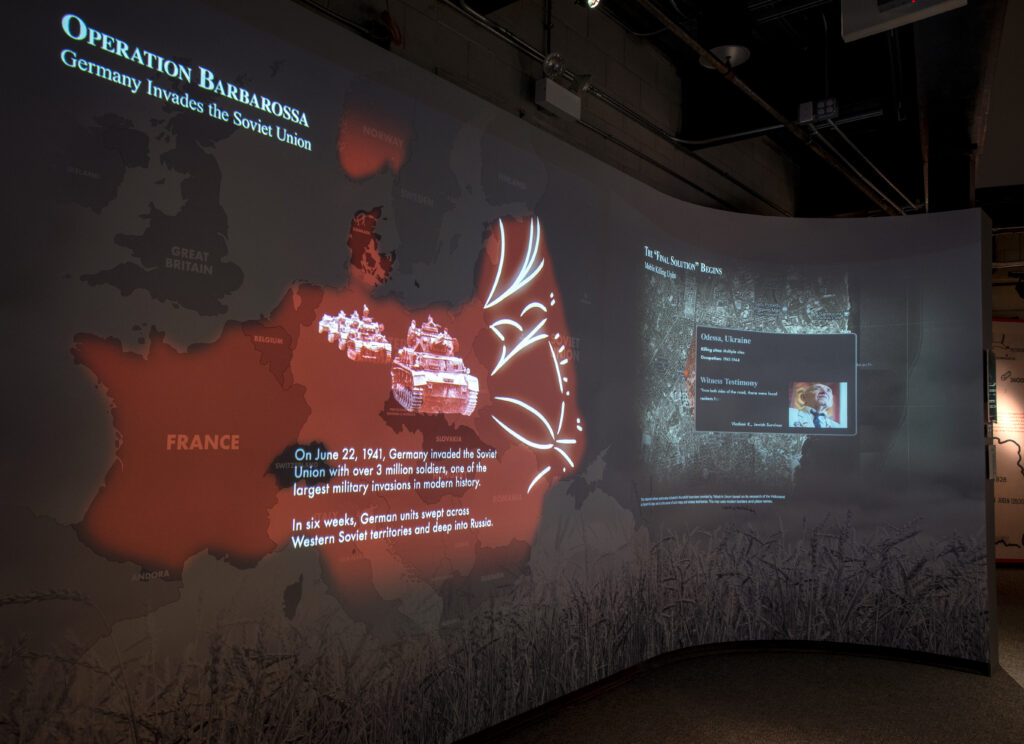Why Teach About the Holocaust in the Soviet Union?
We often hear educators ask how to fit the enormous amount of material on the Holocaust into extremely compact classroom units. Why integrate a complicated history of Jews in the Soviet Union? It is a country that no longer exists, and a history with which many people are unfamiliar compared to the Holocaust in western European countries. Yet we must teach this history to help students understand:
1. The full breadth and scope of Nazi atrocities
2. How geographically vast the Holocaust reached beyond Europe’s borders
3. The deep injustice that occurred to the Jewish community in the Soviet Union after the war.

Activities
This online exhibition is framed thematically in order to help you address these topics in your classroom.
This online exhibition is framed thematically, covering Pre-War Life, Operation Barbarossa, Holocaust by Bullets, Ghettos, Nazi Camps, Evacuation, Resistance and Response, Liberation, and Post-War Life. To help you address these themes in your classroom, we’ve provided activities that help students explore the following essential questions:
- How can you learn about a mass atrocity from primary sources?
- How do visual images help shape our understanding of historical events?
- What aspects of Jewish life in the Soviet Union were destroyed in the Holocaust?
- How do we remember our past?
- Why would someone risk helping a Jewish person survive?
- What are different ways people can resist, and how can music be a tool for resisting oppression?
- What role can visual art have in creating change?
The time is long overdue to address what happened in the German-occupied Soviet Territories in our classrooms. As hatred, bigotry, and antisemitism are on the rise, including Holocaust distortion and denial, and as the Survivor population dwindles, it is more important than ever to teach this history and share these stories.


Operation Barbarossa, began on June 22, 1941 and brought a wave of destruction to four million Jews residing in the Soviet Territories
Operation Barbarossa, the German invasion of the Soviet Union, which began on June 22, 1941, brought a wave of destruction to 4 million Jews residing in the Soviet Territories (Estonia, Latvia, Lithuania, Belarus, Ukraine, Bessarabia, North Bukovina, and the Soviet Union). Approximately 1.5 million were able to evacuate or escape deeper into the Soviet Union, leaving around 2.5 million Jews under German occupation. The Nazis and their collaborators murdered the majority of those left behind. Mobile killing units (Einsatzgruppen) followed the German Army, murdering Soviet civilians and Jews one bullet at a time.
One out of three Jews killed in the Holocaust were murdered by bullets, not in gas chambers.
In fact, relatively few Soviet Jews were killed in Auschwitz or other Nazi killing centers. Nazis and their collaborators put those that survived the first six months of Operation Barbarossa into ghettos and camps where they experienced starvation, illness, and harsh treatment. These sites could exist anywhere between two days, a month, or a year before they were liquidated and the prisoners murdered. Between 1941 and 1944, only approximately 100,000 Jews survived the Holocaust in the Soviet Union.
The western world has largely ignored the Holocaust in the German-occupied Soviet Territories. For decades, these stories of murder, persecution, and displacement of Jews in the Soviet Union at the hands of the Nazis and their collaborators sat behind an iron curtain of silence from both the east and the west. The Soviet regime promoted a revisionist history that Soviet Jews were victims of the “Great Patriotic War” in the same way all Soviets were. Many eyewitness accounts were subsequently suppressed after the war, and most of the stories of victims and survivors have never been heard. Now, over 80 years later and 30+ years since the fall of the Soviet Union, we are still uncovering this history.





